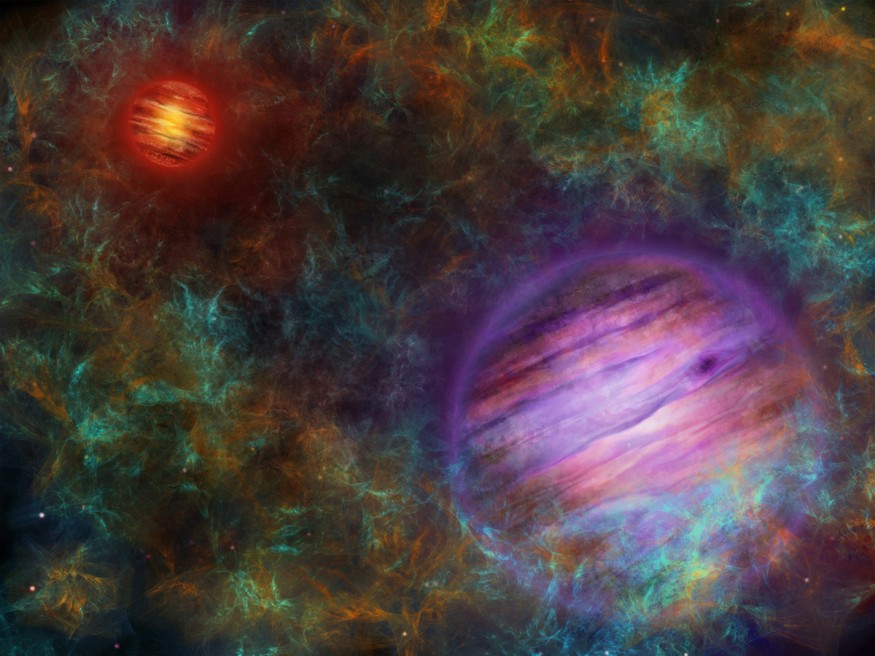Astronomers have discovered the newest low-mass binary system composed of a brown dwarf and a celestial body of mass. The gap between both the objects is five times the distance between the Sun and Pluto, which also renders Oph 98 the record holder of the limited energy relation between components. The thesis is preprinted and reported on the arXiv.org website.

Astronomers are especially interested in the planetary structures of brown dwarfs, which hold a transitional role between gas giants and stars. Just a few bodies with stellar mass (less than 13 Jupiter masses) are known to date, circling young brown dwarfs (less than 20 million years of age).
These structures are excellent for evaluating mathematical frameworks of their development and development processes, which vary from planets' star. Furthermore, brown dwarf structures measurements help explain the chemistry and function of young giant exoplanets' atmospheres.
OPH 98: How It Looks Like And Where It Is Located
The peculiar double substellar structure Oph 98 (or CFHTWIR-Oph 98) is situated in the star formation area in the constellation Serpentine, at a distance of 450 light-years from the Sun. It has been announced by a team of astronomers led by Clemence Fontanive of the University of Bern.
It was discovered by studying Hubble Space Telescope infrared measurements. Scientists used CFHT (Canada-France-Hawaii Telescope) archival data. Cosmonauts re-observed the device using Hubble Space Telescope in 2013 and UKIRT (United Kingdom Infra-Red Telescope) land telescope in 2020.
Data review observed that the model comprises of the brown dwarf Oph 98 A with a Jupiter mass of 15.4 masses (close to the boundary value dividing brown dwarfs from massive exoplanets) and its counterpart Oph 98 B with a Jupiter mass of 7.8 masses.
The dwarf and its satellite's effective temperatures are predicted to be 2320 and 1800 Kelvins, respectively, if the age of Oph 98 is equivalent to the three million-year age of the star-forming zone.
The mass of the main part of the system could be 9.6-18.4 masses of Jupiter and of the satellite - 4.1-11.6 masses of Jupiter if the age of Oph 98 is in the range between 1 and 7 million years. At 200 astronomical units, approximately five times the size from the Sun to Pluto, the distance between the bodies in the universe is immense.
The moon of a brown dwarf, a gas giant or a cold brown dwarf, has yet to be decided by scientists. The Oph 98 itself, with deficient gravitational communication capacity, was known as the youngest low-mass substellar structure. It's a really low-mass planet either way. Even though they're added together, they're far less large than the least massive real star.
Further observations are anticipated to allow both a deeper understanding of the mechanisms of the formation of very low mass brown dwarfs and the processes of the development of such exotic double structures.
OPH 98: How Was It Made?
All this suggests that there is far more to learn about structures such as these. They are very faint, but we haven't seen much of them. It helps that we are so similar to this one, and so young. This implies that with their creation's heat, the two points are blazing away and therefore brighter.
We don't know precisely how they were created, but we have a good sense of what their future is. They would most definitely not survive as long as a couple. Any star that passes relatively near would yank these cosmic objects apart. Both will spend the remainder of their eternity roaming the galaxy alone.
Such is the destiny of several things, including, I may remember, the Light, in our Milky Way. But it makes me think how many rogue worlds, cold, dim stars virtually unknown to humans, are out there in the darkness. In the cosmos, a lot is going on because right now, we're just getting to see how many we don't see.
Check out more news and information on Space on Science Times.











